Australia’s fixed income revolution: How Bond ETFs are changing the game
Australian investors have faced turbulent economic conditions in recent years. As global central banks raised interest rates at one of the fastest paces on record in 2022 and 2023, volatility has rippled across share and bond markets.(1) Paired with a cost-of-living crisis and Australia’s ongoing battle against inflation, investors are seeking relief.
However, there is good news for those who want to alleviate some of this financial pressure, as higher interest rates have put the “income” back in fixed income. Investors can now achieve reasonable yields from fixed income securities without taking on the higher volatility exhibited in other asset classes like stocks.
The growing proliferation of fixed income ETFs has enabled access for investors to diversify their portfolios to access securities that were once cumbersome and costly to obtain. Continued innovation in ETFs is set to transform the investment landscape and change the game for investors, offering tools for income generation, defensive strategies, and enhanced portfolio diversification.
Key takeaways
- Australian investors are underweight in fixed income in their portfolios compared to other nations.
- Fixed Income ETFs are one of the fastest-growing asset classes in the market, compounding at a growth rate of 40% p.a.
- Australian investors are using ETFs to gain exposure to specific fixed income exposures such as US government and corporate bonds and diversified Australian banking credit.
- Innovation in fixed income ETFs is likely to continue with the development of more nuanced products providing exposure to specific areas of the bond market to help investors try to achieve their desired exposures and outcomes.
The evolution of fixed income in Australia
Prior to the 1980’s, government-owned enterprises were the largest issuers in the bond market with the total market relatively infant and small. Moreover, during the first half of the 20th century, most companies financed their operations internally or through the share market. Government bond issuance did spike during World War 1 following Australia’s government “war bond” issuance.
Since the 1980’s there has been strong development in the bond market driven by deregulation and privatisation, with a wide range of entities issuing AUD-denominated bonds, predominately from the Australian banks. The Australian bond market is now worth over $2 trillion dollars and continues to grow in size.(2)
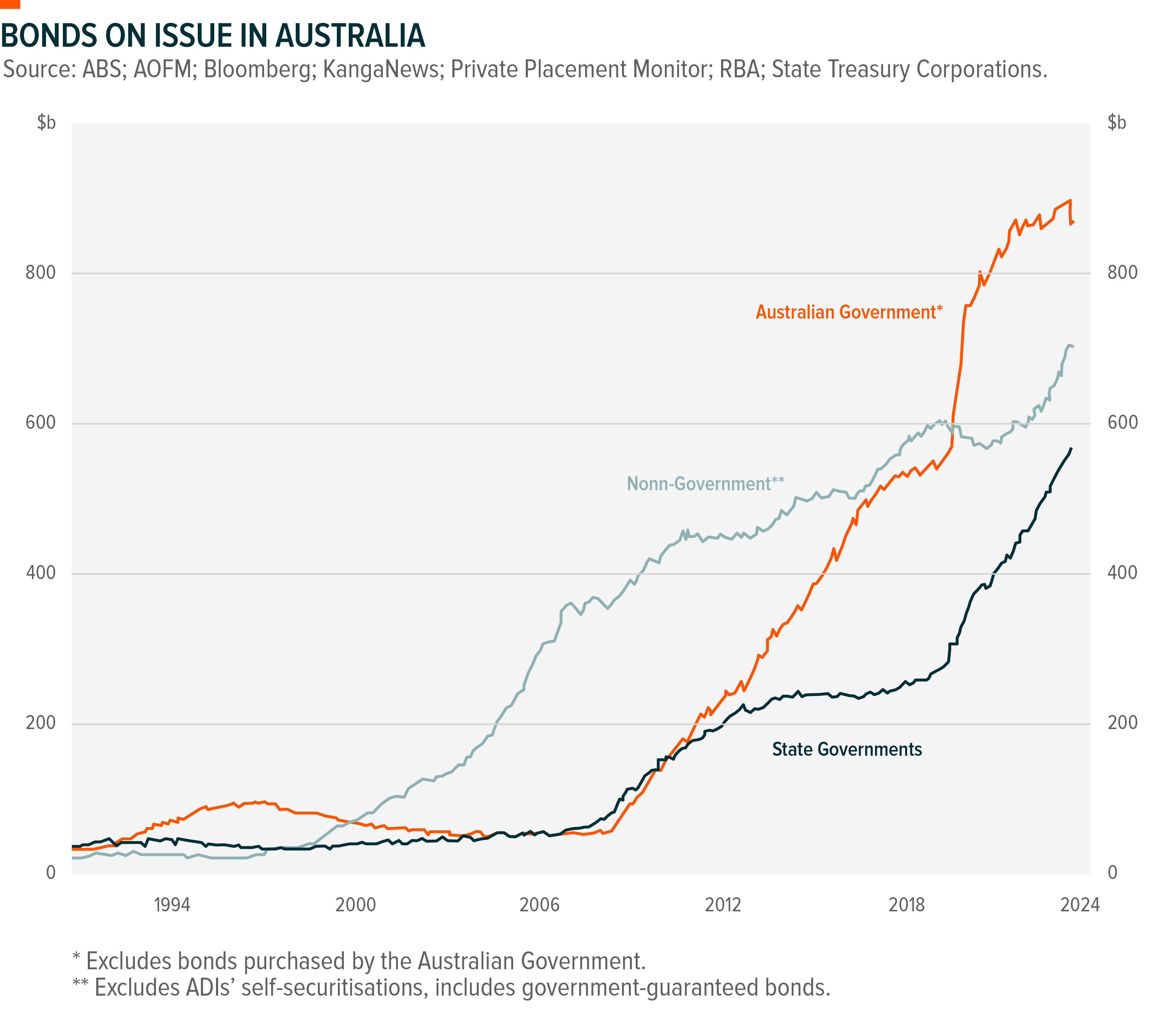
The Australian bond market was heavily oriented towards a local investor base but has seen an increasing appetite from global investors and different investor types such as banks, financial intermediaries, super funds, central banks and everyday investors.
Interestingly, Australian investors have one of the lowest allocations to fixed income (i.e. bonds) compared to globally developed peers, hovering around 14% which has been unchanged since 2013.(3)
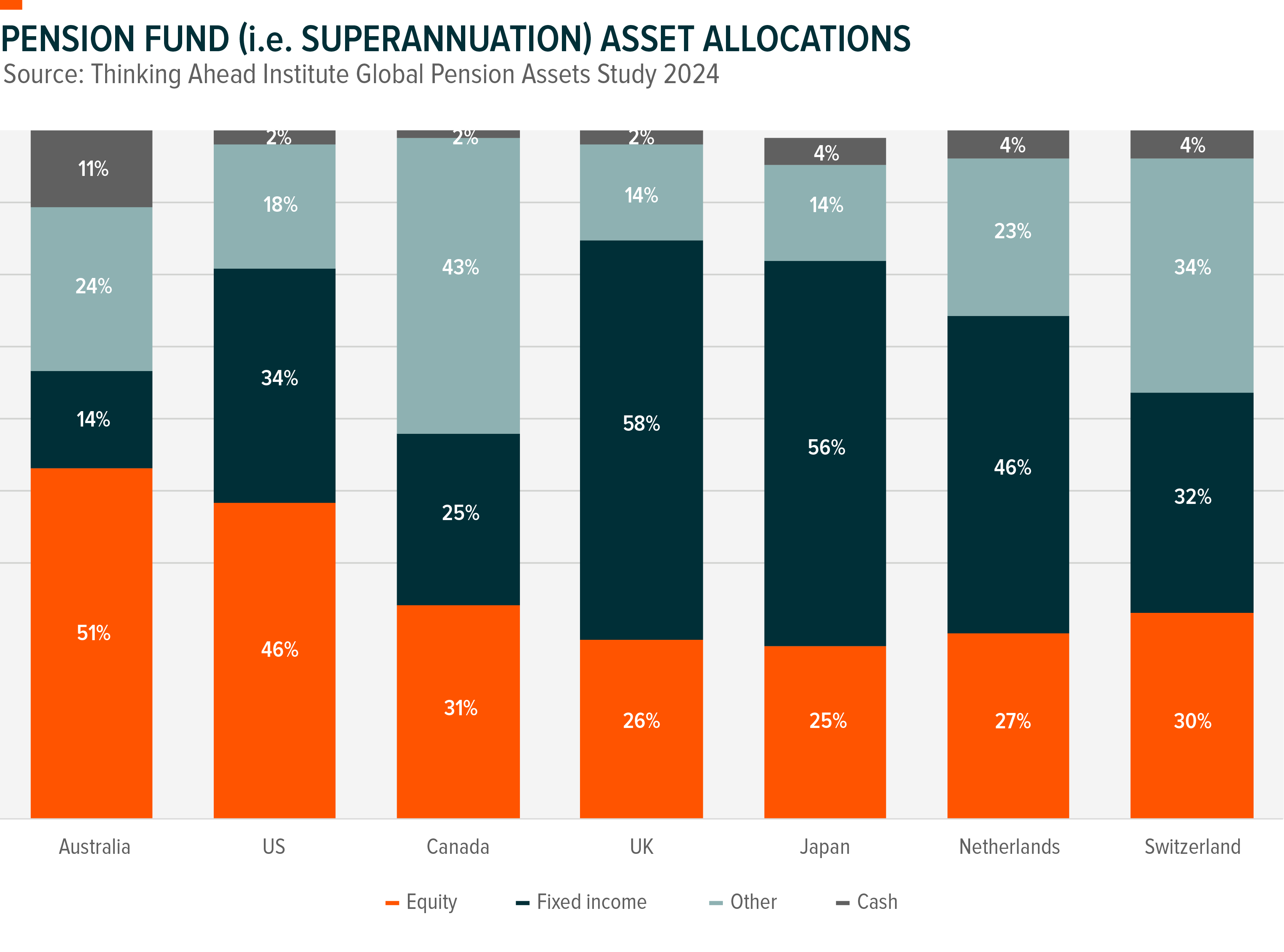
Most of the allocation has been to traditional forms of fixed income like cash and term deposits. Cash and term deposits can play an important part in client portfolios, but while term deposits may lock-in rates, they may lock out opportunities of other types of fixed income investments.
ETF market
ETFs have democratised fixed income investing by making it easier, more liquid, and cheaper. Traditionally, fixed income investing required purchasing large minimum lot sizes, typically only accessible to large banks and institutions trading over-the-counter (OTC). ETFs eliminate these barriers, allowing individual investors to buy and sell fixed income securities conveniently on the share market.
Fixed income ETFs can provide investors with income and portfolio diversification, all whilst having daily liquidity. While they have only been offered to Australian investors since 2012, they are growing at a ten-year compound annual growth rate of 40% p.a. Currently valued at approximately $28 billion, fixed income ETFs now constitute 14% of the total Australian ETF market, a substantial increase from the 7% market share they held ten years ago.
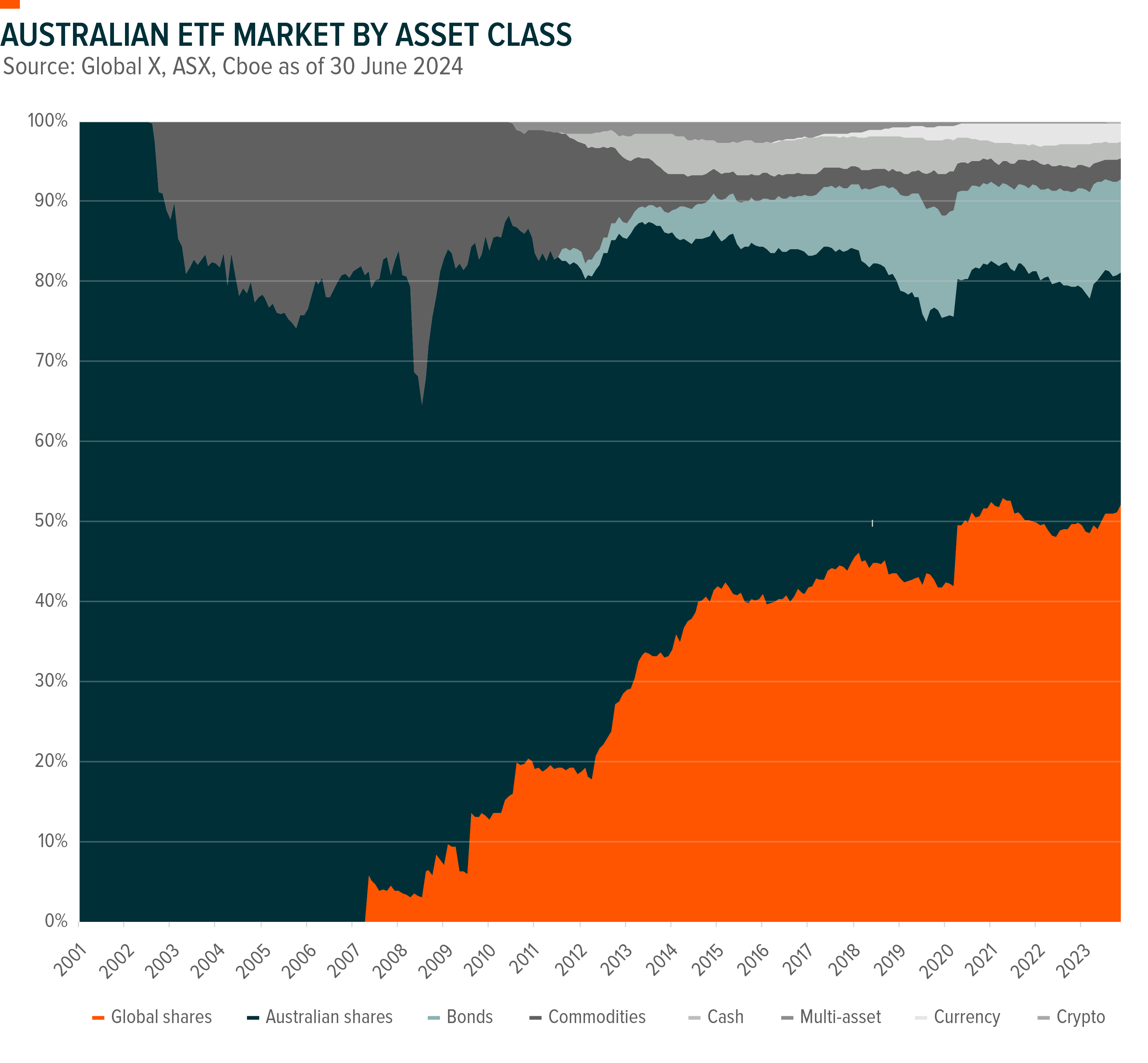
Notably, in 2023, the inflows into fixed income ETFs were on par with those into equity ETFs for the first time. An impressive $6.5 billion was invested into fixed income ETFs in 2023, representing 43% of the total market flows, the highest proportional level recorded.(4)
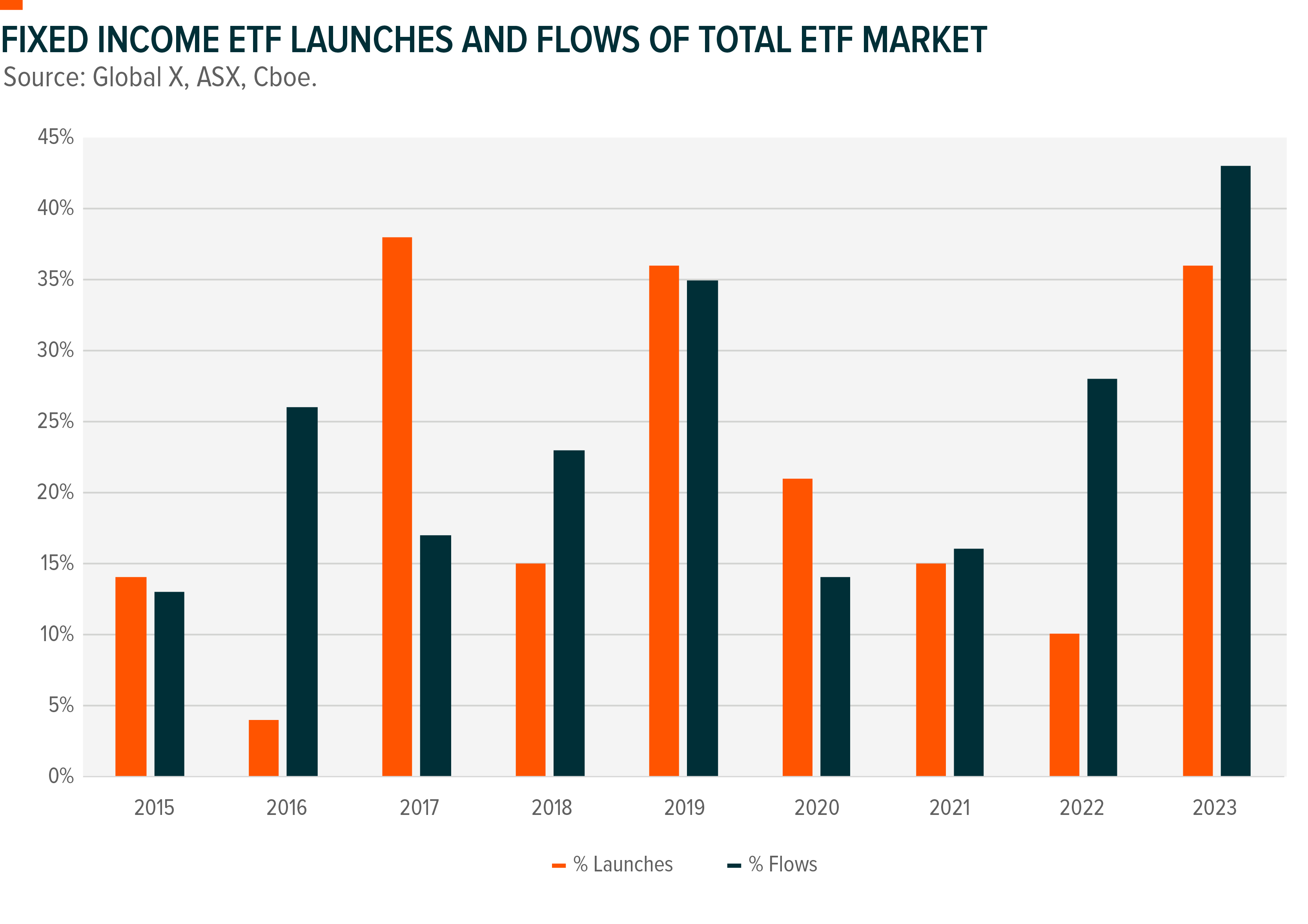
Moreover, there has been an increasing number of fixed-income managed funds experiencing outflows, underscoring the structural shift from high-cost to low-cost investing in more transparent and tax-efficient structures like ETFs. While the vast majority of fixed-income ETFs have enjoyed positive net flows so far in 2024, over 50% of actively managed fixed-income managed funds have seen investors pull their money out.(5)
The next wave of innovation
The fixed income component of the Australian ETF market has seen increasing product availability (now over 70 products available) with new innovative solutions being launched to help cater for Australian investor needs.
The Australian fixed income ETF market has grown significantly since the first Australian government, semi-government, and inflation bond ETFs were introduced in 2012. Corporate bond ETFs were the second innovation of fixed income ETFs and grew in market share with product innovation coming since 2015. Additionally, floating rate notes and hybrid securities have gained popularity since their introduction in 2017, with floating rate notes like subordinated bonds seeing close to $800 million of net flows in 2023.
Initially, only ETFs that provided exposure to Australian fixed income securities were available until 2015, when ETFs for global developed and emerging market bonds were launched. In 2022, Global X began offering more specific fixed income exposures, such as US fixed income, through the Global X US Treasury Bond ETF (Currency Hedged) (ASX: USTB) and Global X USD High Yield Bond ETF (Currency Hedged) (ASX: USHY), allowing for more granular exposure in client portfolios.
There has also been an increasing number of active fixed income managers launching their strategies as an active ETF, but they still only account for 8% of the total fixed income market, down from 12% in early 2022 due to some outflows and other areas of the market receiving the majority of investor dollars.
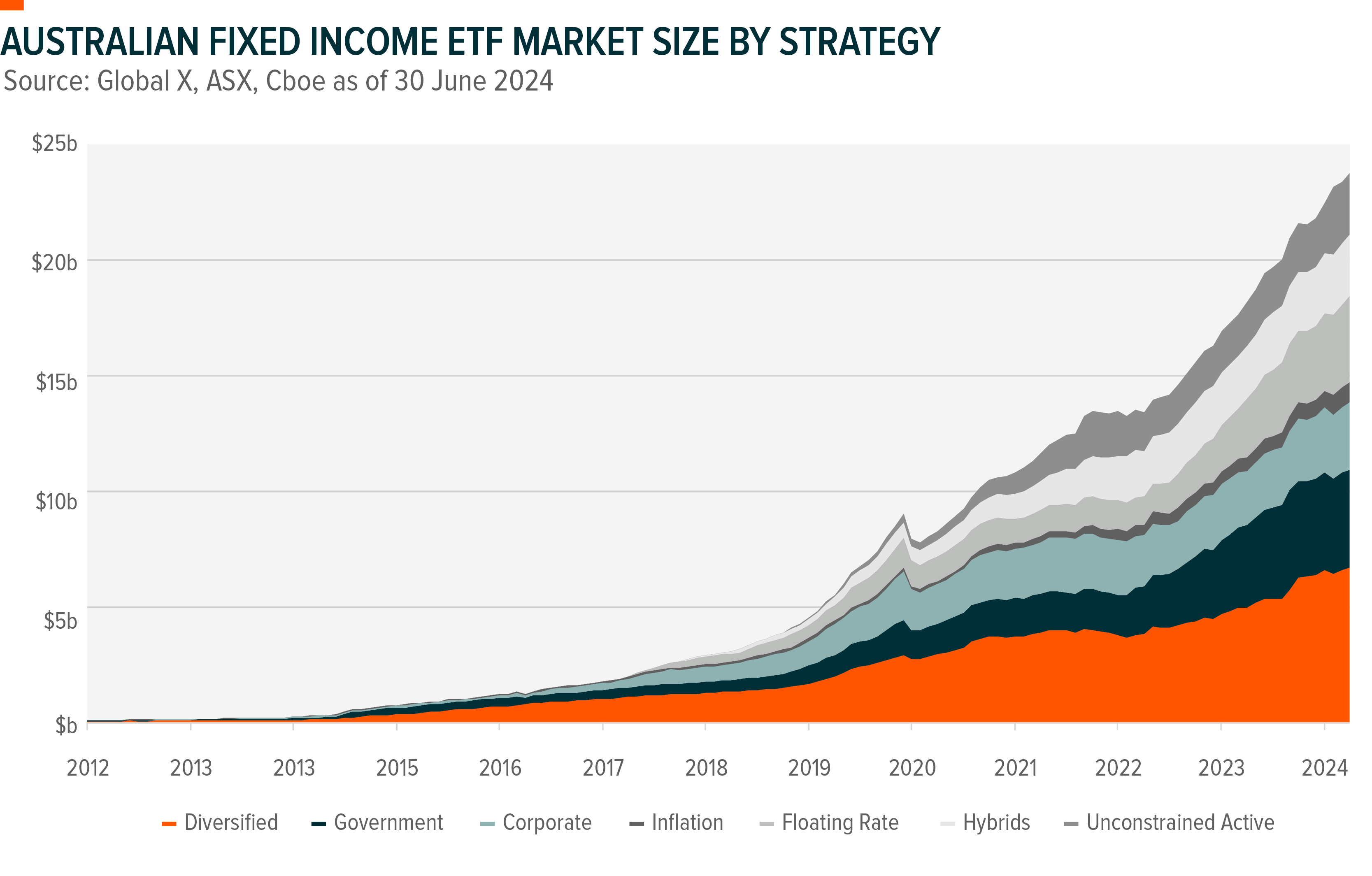
The next wave of fixed income innovation may see existing fixed income strategies being packaged up into one tradable security targeting a particular sector to make portfolio allocation easier and simpler. For example, the recently launched Global X Australian Bank Credit ETF (ASX: BANK) provides a first-to-market diversified solution enabling investors to combine three different fixed income security types (senior bonds, subordinated bonds and hybrid securities) dedicated to Australian banks across the capital stack into one cost-effective index-based product listed on the share market.
There will continue to be a push in product innovation by ETF issuers to offer more solutions catering to investor needs. With passive income and portfolio protection being common goals for Australian investors, ETFs can help investors access the fixed income asset class through a more liquid, low-cost, and tax-efficient means. What once was considered a boring asset class is now front of mind for Australian investors amid market uncertainty and interest rate pathway deviations. ETFs are changing the fixed income game, making sophisticated investment strategies more accessible, and empowering investors to have greater choice in adding defensive exposure and income enhancements in their portfolios.

3 stocks mentioned
3 funds mentioned

